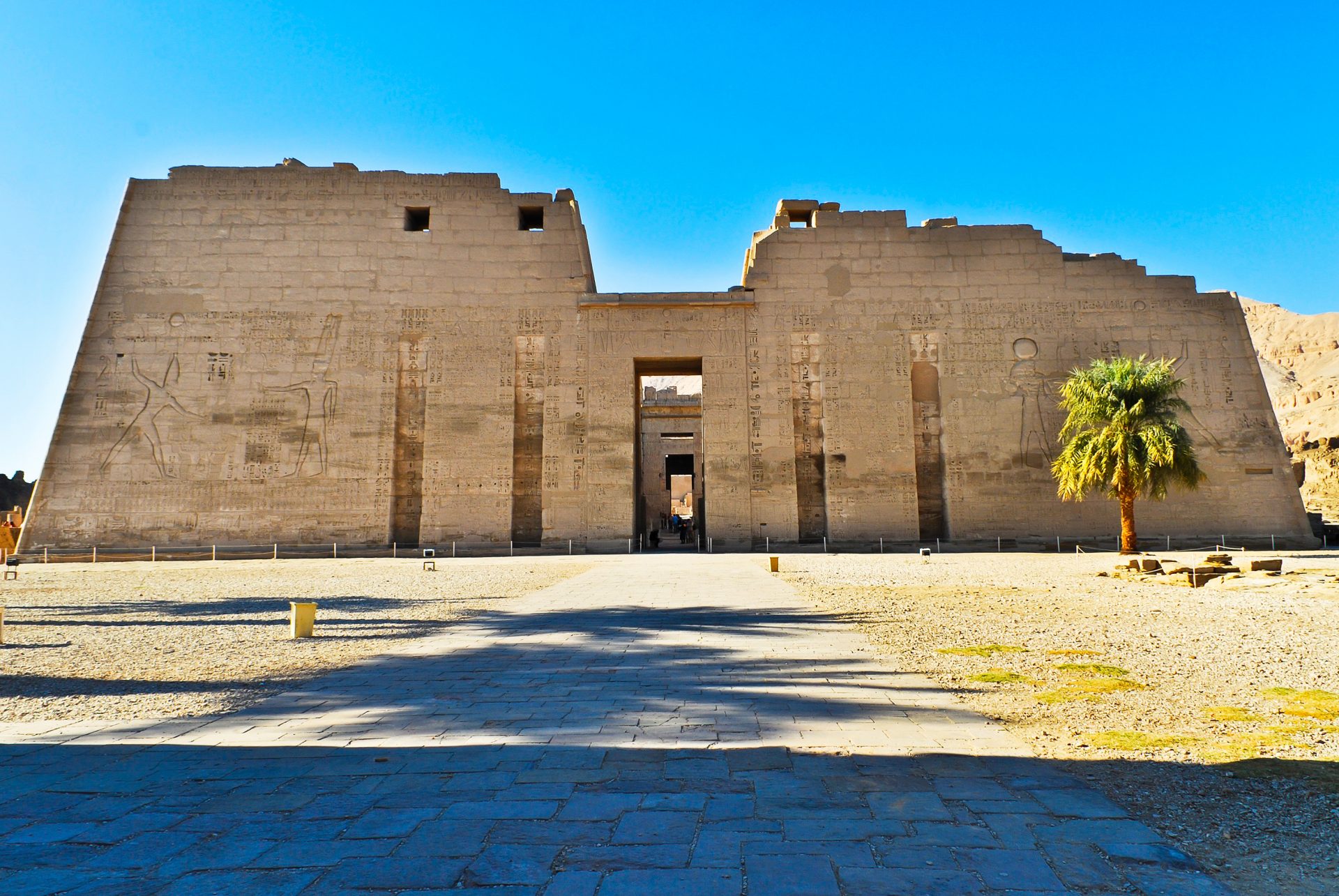Egypt and the Bronze Age Collapse
Throughout history Egypt faced many enemies and struggles. Few however, can compare to the apocalypse of the Bronze Age Collapse.
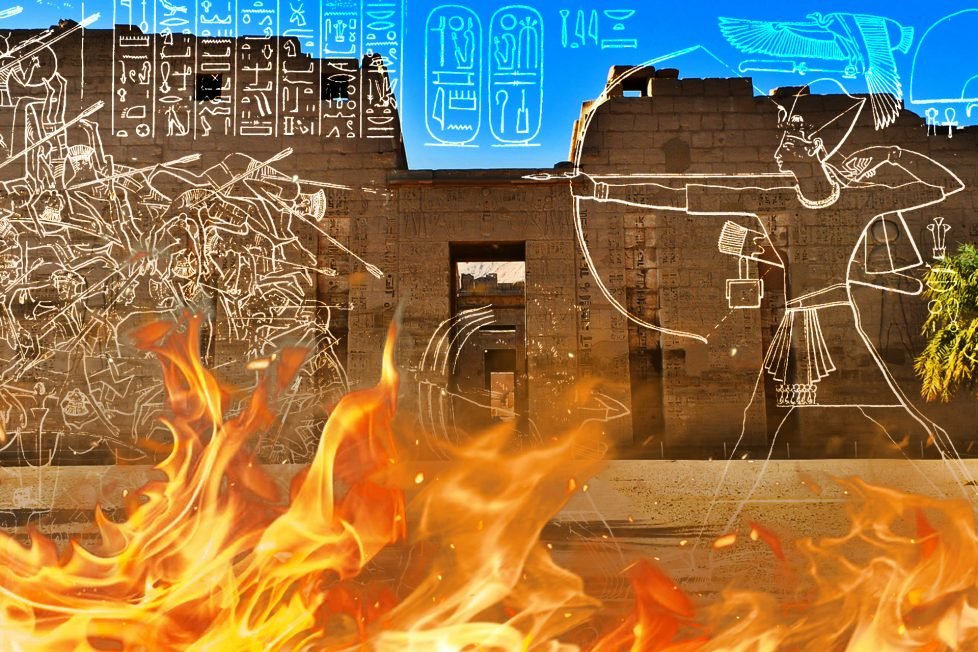
Throughout history Egypt faced many enemies and struggles. Few however, can compare to the apocalypse of the Bronze Age Collapse.

Table of Contents
ToggleThroughout history many nations and empires have risen and fallen from the British Empire to the Roman Republic. However, despite history providing a plethora of these events, one of the most mysterious and fascinating geopolitical shifts comes to us from the Bronze Age. The ancient world was home to many magnificent kingdoms, but few as magical as Egypt. Throughout the Bronze Age Egypt continued to rise in power as the Bronze Age coincided with the period of Egyptian military expansion and prosperity known as the New Kingdom. However, in the 12th century B.C.E, Egypt suffered greatly from what is know as the “Bronze Age Collapse.” This proved to be an event from which the Egyptians would never fully recover.
The Bronze Age Collapse itself refers to the series of kingdom ending events that lead to the deaths of the major powers around the Eastern Mediterranean during the late Bronze Age. At this time the Eastern Mediterranean was home to several thriving kingdoms who shared in the bounty of a more globalized world. Healthy populations, strong militaries and well-established trade routes allowed these ancient peoples to build a world ahead of its time. So how could all of this come crashing down?

In many ways the collapse was the result of a perfect storm of events, both environmental and geopolitical. The first of several factors in this perfect storm was severe drought. As a result of research done on core samples from the Sea of Galilee historians now know that at the time of the collapse the Mediterranean was in the midst of a “Megadrought.” This drought created some of the driest conditions of the entire Bronze Age and may have lasted for centuries in some places. In addition to the drought, experts have uncovered evidence supporting earthquakes of both devastating magnitude and frequency throughout the area at the time. These earthquakes would have caused catastrophic damage to the infrastructure of nations who were already reeling from shortages of food and water. It is likely that these events would have stressed the existing governments to their limits leading to considerable civil unrest as people struggled to survive in a collapsing world.
It is in this context that the final factor of the storm emerges, the unknown and unnamed marauders known now by the name the “Sea Peoples.” Unfortunately, today we know very little about who these people were or where exactly they could have come from. This lack of knowledge about not only the Sea Peoples but the collapse itself is due simply to the fact that in much of the region, record keeping stopped. Historical record keeping from major seats of power such as the Hittites, ended seemingly overnight. Communication around the Eastern Mediterranean went dark, and so the survivors of these disasters were left to fend for themselves as the Sea Peoples pillaged and murdered their way across the coast.
As mentioned previously, there were several major civilizations that felt the consequence of the collapse. The first is Greece. At the time Greece was home to the Mycenaean people, who’s physical and literary exploits were so great that this time became the basis for a lot of Greek mythology and legend. One example of this foundation is the historical background for the story of the Trojan War. However, Mycenaean civilization would not survive their military and environmental assailants. As a result, Greece was plunged into what we now recognize as a “dark age” from which would come the city-states we all know and adore such as Athens and Sparta.
The second major victim was the Hittites in Anatolia (think modern day Turkey). The Hittites survived just long enough to leave scant literary record of these events, so most evidence pulled from Hittite sites have been archeological such as razed cities and coastal defensive sites. In the end, the Hittite Empire fared no better than Greece, and Hittite civilization came to a bloody conclusion. The final stage of the collapse was Egypt and her client states and territories. Fortunately, for these regions, they would survive these cataclysmic decades, although this time would shake the foundations of Egypt itself.
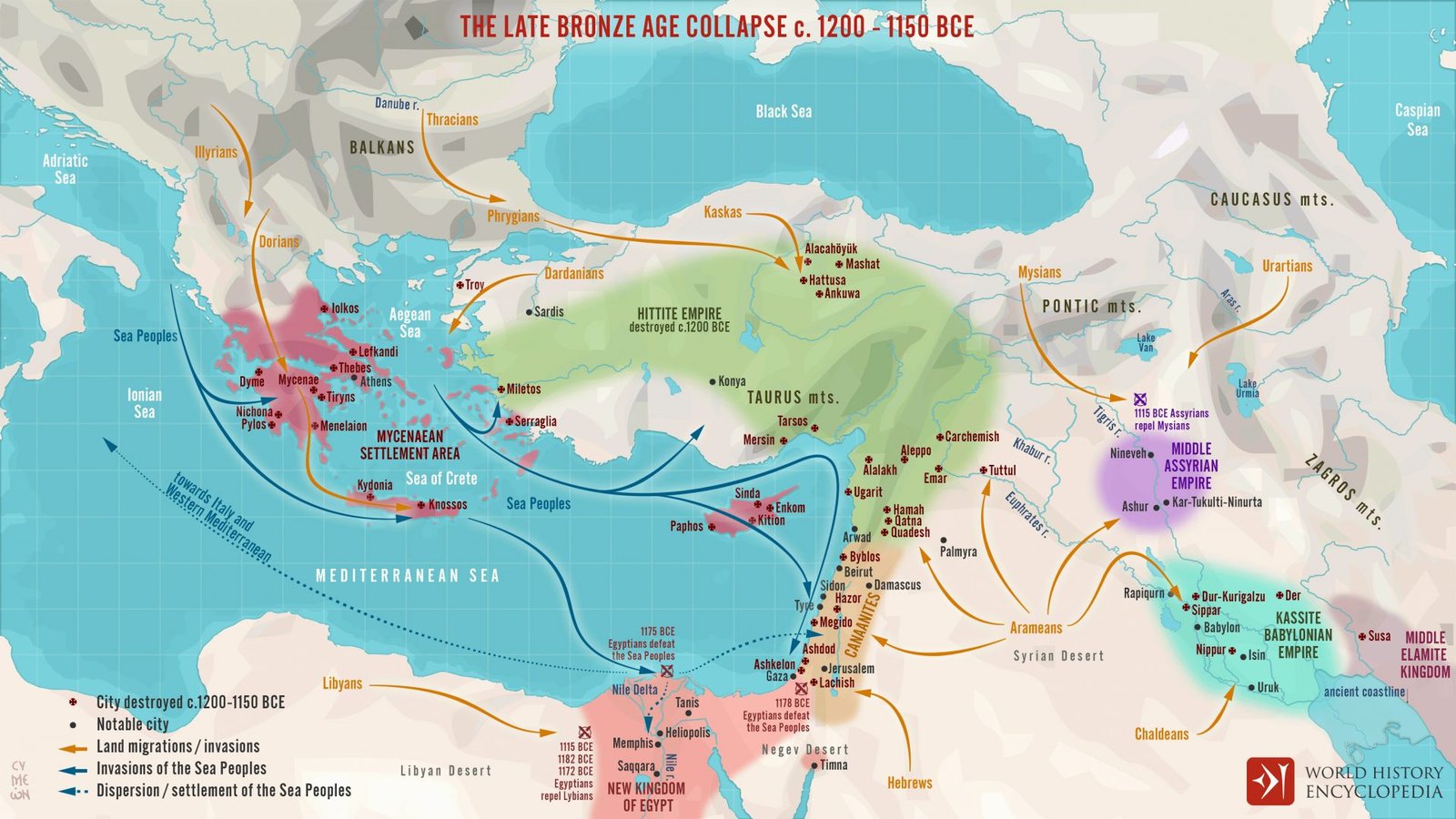
The first effects that Egypt would have felt would likely have been similar to those felt elsewhere such as economic and agricultural strain. Egypt had several advantages over her more western neighbors though. While the megadrought would certainly have caused turmoil throughout Egypt and her territories, they had the mighty Nile at their disposal. Having a massive river to rely on was a luxury that very few people had, so only the Egyptians and perhaps Mesopotamians (via the Tigris and Euphrates rivers) would have been spared the worst of the drought and accompanying famine. In fact, Egypt was so much better off than her neighbors that there is evidence from both the Hittites and the Egyptians that Egypt was at one point providing humanitarian aid to the Hittites via grain shipments courtesy of Pharaoh Merneptah. However, this advantage did nothing to stop the economic hardship that would likely accompany the loss of both Greece and Anatolia as trade partners as Egypt not only exported their goods but also imported goods as well. Much like any global economy Egypt relied on trade for what could not be produced at home.
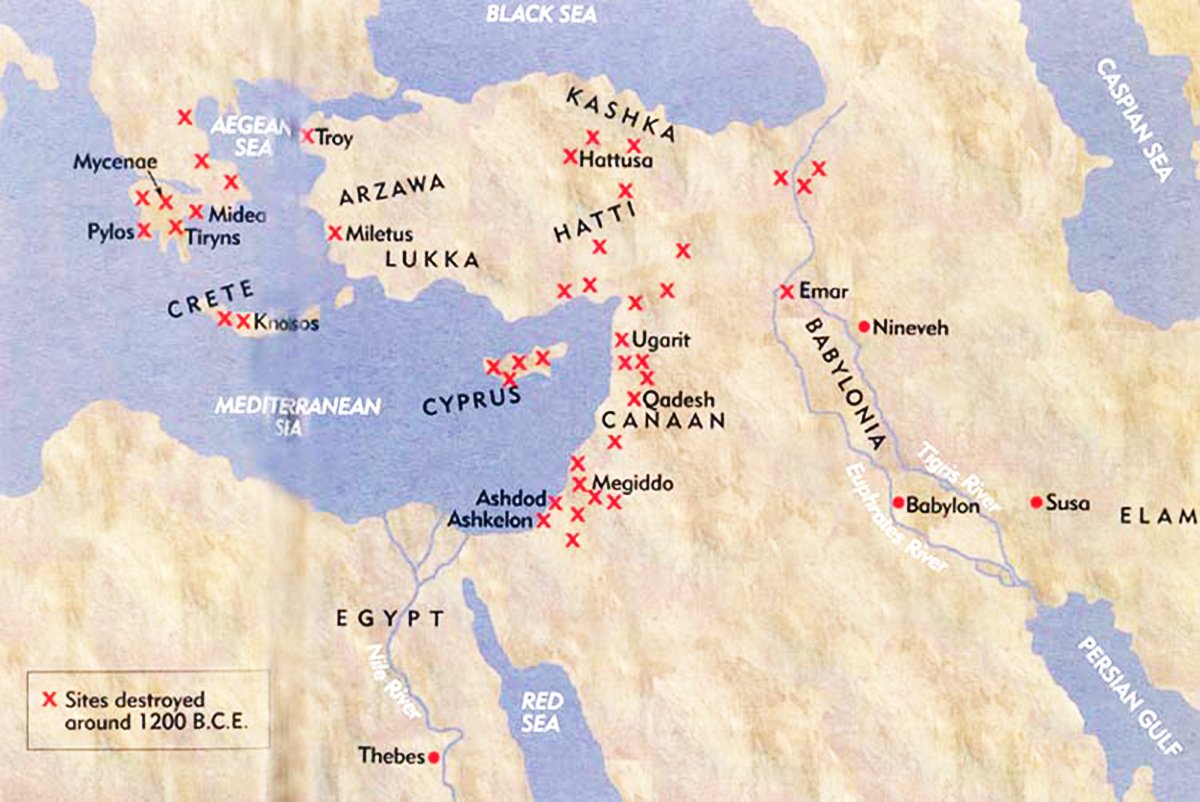
Although Egypt evaded the worst of the drought and famine, similar to economic collapse, they could do little against the earthquakes that had aided in the downfall of their peers. Egyptian cities would likely have fared no better than their Hittite or Greek counterparts. Egyptian life and infrastructure would have been badly damaged as homes and palaces collapsed and stoic temple walls crumbled around the people who built and lived in them, claiming countless lives. While at this point Egypt would no doubt have been reeling from these catastrophes, the last and potentially most lethal threat was still to come, the faceless marauders from the sea.
It is in Egypt that we can find the most evidence regarding who these people may have been and what role they may have played in the end of the Bronze Age. Egypt offers us this insight because they are the only civilization to have gone to war with the Sea People and survived. Throughout the roughly 50-year duration of the Bronze Age Collapse, Egypt was able to repel these invaders twice. The first defense was under Pharaoh Merneptah and the second and most famous was under Ramesses III. It is also from Ramesses III that we get the most detailed records of their struggle against the Sea People. These mysterious invaders were coming for Egypt, by both land and sea.
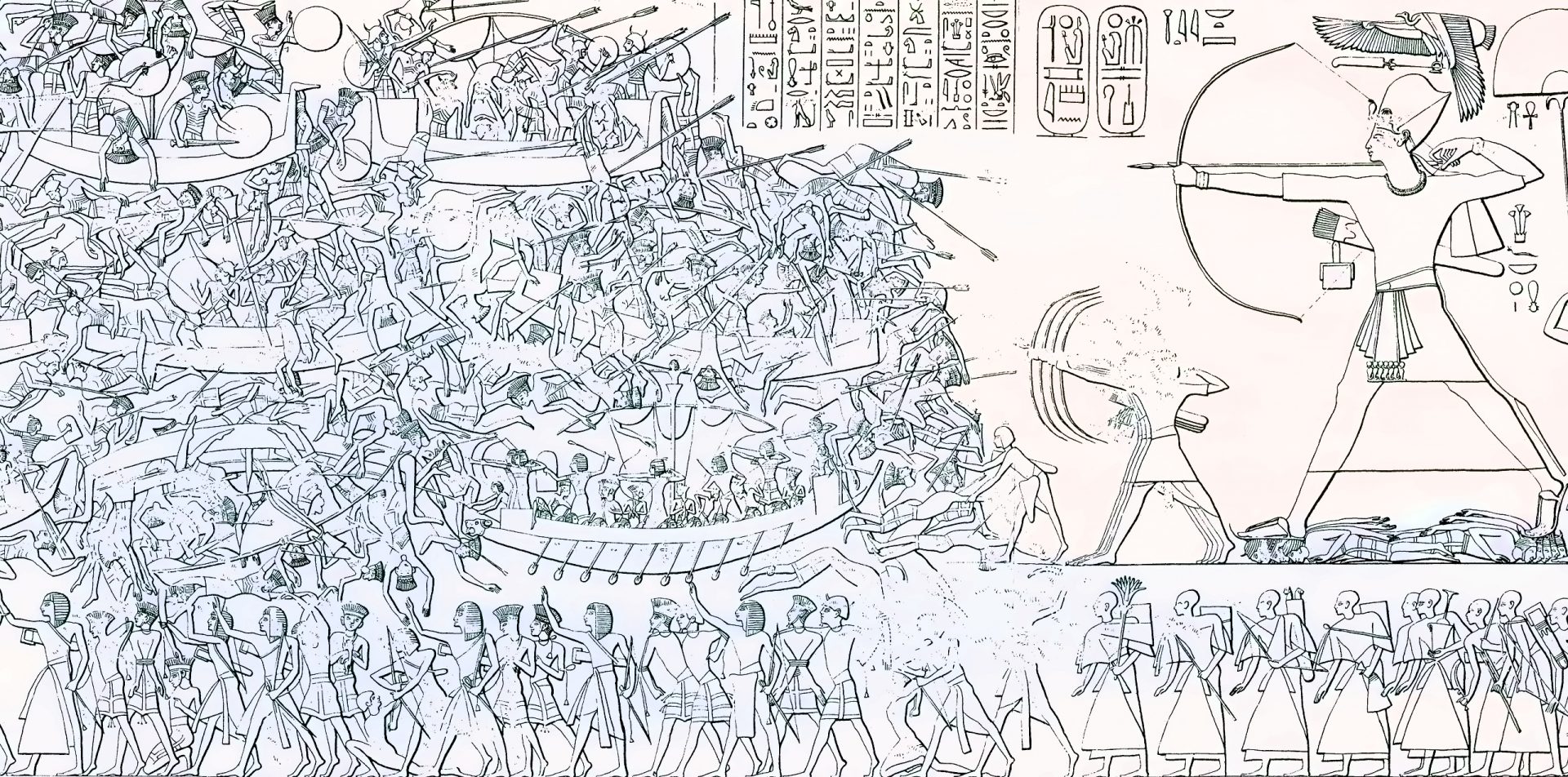
As the Egyptian military prepared for the eventual clash (all while attempting to recover from decades of drought and famine) they would surely have been anxious considering the exploits of their enemy so far. By this time, the Sea People had ravaged everything in their path including the mighty Hittites. This development must have scared the Egyptians, as they were no strangers to Hittite military prowess and had fought several major battles with the Hittites in earlier years. These battles with the Hittites did not always end in an Egyptian victory and now this capable neighbor had fallen silent. This silence was followed by reports from Canaan. The Sea People had arrived, and no one was spared. The port city of Ugarit was destroyed and the enemy was pushing south toward Egypt proper. Pharaoh Ramesses III rallied both his land army and navy to meet the invaders. Egypt’s land forces collided with the Sea People in 1177 B.C somewhere in southern Palestine. Ramesses III was a capable leader by this time and made sure to position his troops with Egypt’s finest warriors at the front. While the enemy navy unwittingly trapped themselves in the waterways of the Nile Delta leading to their destruction, their infantry fared no better on land. Despite the years of turmoil, Egypt’s preparations and natural advantage paid off and the vast majority of the Sea People were defeated.
Although they were successful in repelling the Sea People, Egypt’s woes did not end there. The land was still impoverished, the region was gripped by drought, and the earthquakes had done terrible damage. However, a great victory had been won and Ramesses III made sure to commemorate it. At his mortuary temple Madinat Habu, Ramesses III left an inscription both noting his victory as well as the military prowess of the Sea People. The depiction and records at Madinat Habu have been a great tool for Egyptologists as they offer many insights as to what the sea people looked like and how they fought in addition to the Egyptian preparations.
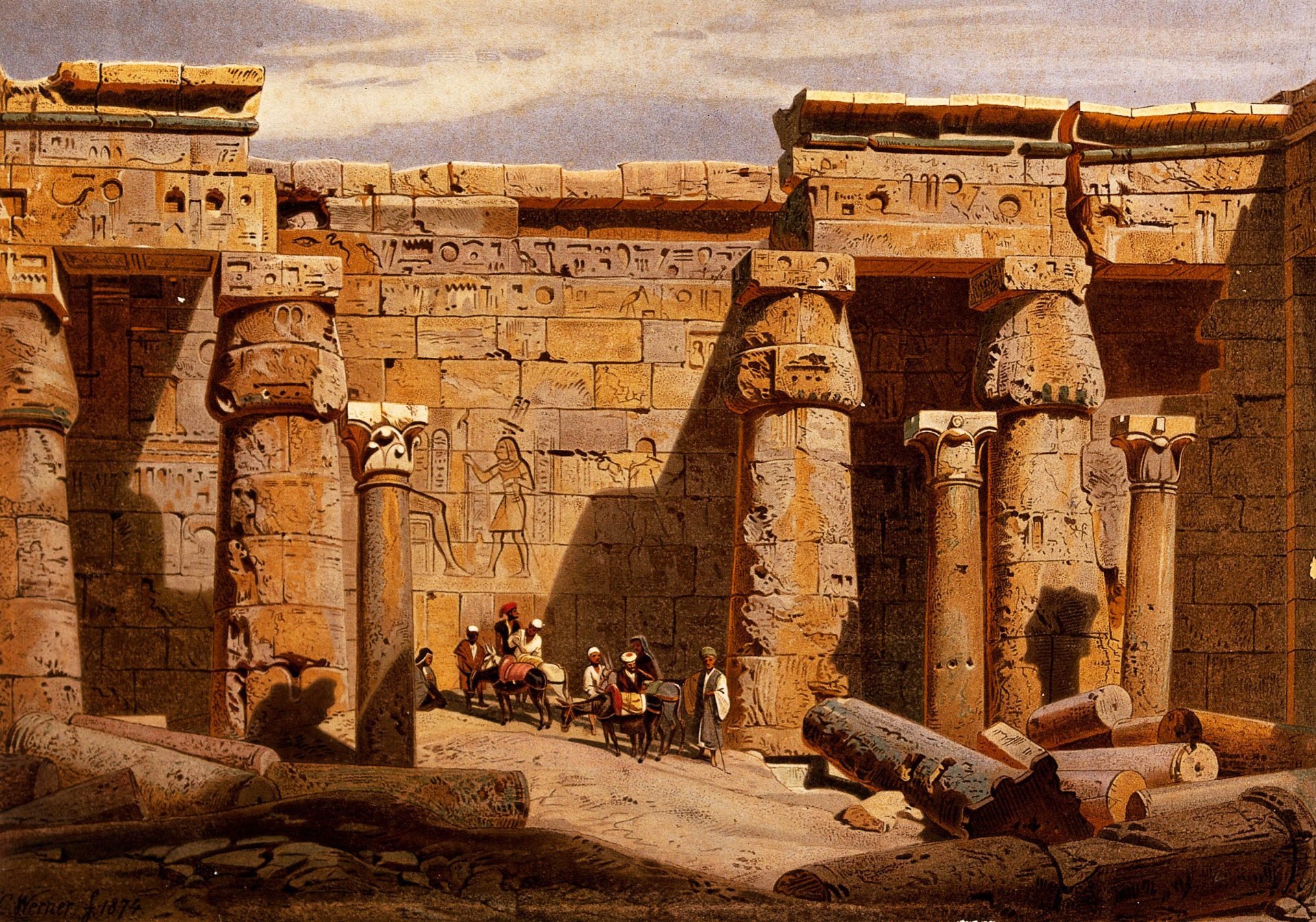
Even with Egypt defeating the bulk of the Sea People, the land was forever changed. In the north of Egypt’s borders around modern day Palestine, one invader tribe was able to carve out a home. These people were known as the Peleset and are believed to be the basis for the Philistines, a civilization any biblical enthusiast will recognize. In the South, Egypt was forced to concede a considerable amount of territory. The brightest days of the Egyptians were behind them. At the end of it all, Egypt was the sole survivor of a literal apocalypse. Empires had fallen, languages were forgotten, the environment had grown harsh and inhospitable, and many lives were lost. Egypt however, remained. The people were beaten and bruised, but thanks to their preparedness, strong leadership and the mighty Nile, Egypt had avoided the grisly fate of her neighbors.
